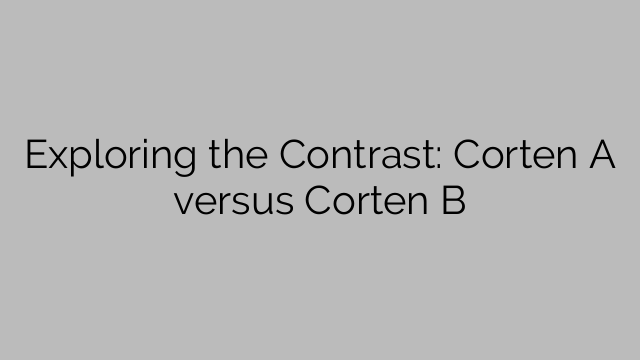When it comes to weathering steel, two popular options often come to mind: Corten A and Corten B. Both grades are well-known for their ability to withstand the harsh elements and develop a protective layer over time, but they do have some distinct differences. In this article, we will explore the contrast between Corten A and Corten B, which can help you make an informed choice for your project.
1. Composition:
Corten A and Corten B are both made from a group of steels known as alloy steels. These steels have a high level of chromium, copper, and nickel, which gives them their weathering characteristics. However, the compositions of Corten A and Corten B differ slightly. Corten A contains a higher percentage of copper, while Corten B has more phosphorus. This difference in composition results in varying weathering properties and aesthetic appearances.
2. Weathering properties:
One of the main reasons weathering steel is popular in architecture and construction is its ability to develop a protective layer, known as a patina, over time. This patina acts as a barrier against moisture and other atmospheric elements, preventing corrosion. Corten A is known for its slower rate of patina formation, making it ideal for areas with less harsh weather conditions. On the other hand, Corten B develops a patina faster, making it suitable for regions with more severe weather exposure.
3. Aesthetic appearance:
The visual appeal of weathering steel is highly sought after in architectural and design projects. Corten A and Corten B develop rich rust-colored hues, but the intensity and shade can differ. Corten A typically develops a more reddish-brown patina, while Corten B has a darker, almost blackened appearance. The choice between these two aesthetic options ultimately depends on the desired look and feel of the project.
4. Εφαρμογές:
Both Corten A and Corten B can be used in a wide range of applications, including building facades, bridges, outdoor sculptures, and landscaping. However, based on their distinct characteristics, certain applications may favor one grade over the other. For example, Corten A might be favored for projects in regions with milder climates or for objects that require a longer lifespan before achieving the desired patina. On the other hand, Corten B could be more suitable for structures exposed to harsh weather conditions or projects that require a faster development of the patina.
In conclusion, while Corten A and Corten B share many similarities in terms of their weathering steel properties, there are distinct contrasts between the two. Corten A, with its slower rate of patina formation and reddish-brown appearance, is a good choice for projects in less severe climates. In contrast, Corten B, with its faster patina development and darker appearance, is ideal for areas with more extreme weather exposure. Understanding these differences will help you make an informed decision when selecting the right weathering steel grade for your specific project.
[ad_2]

